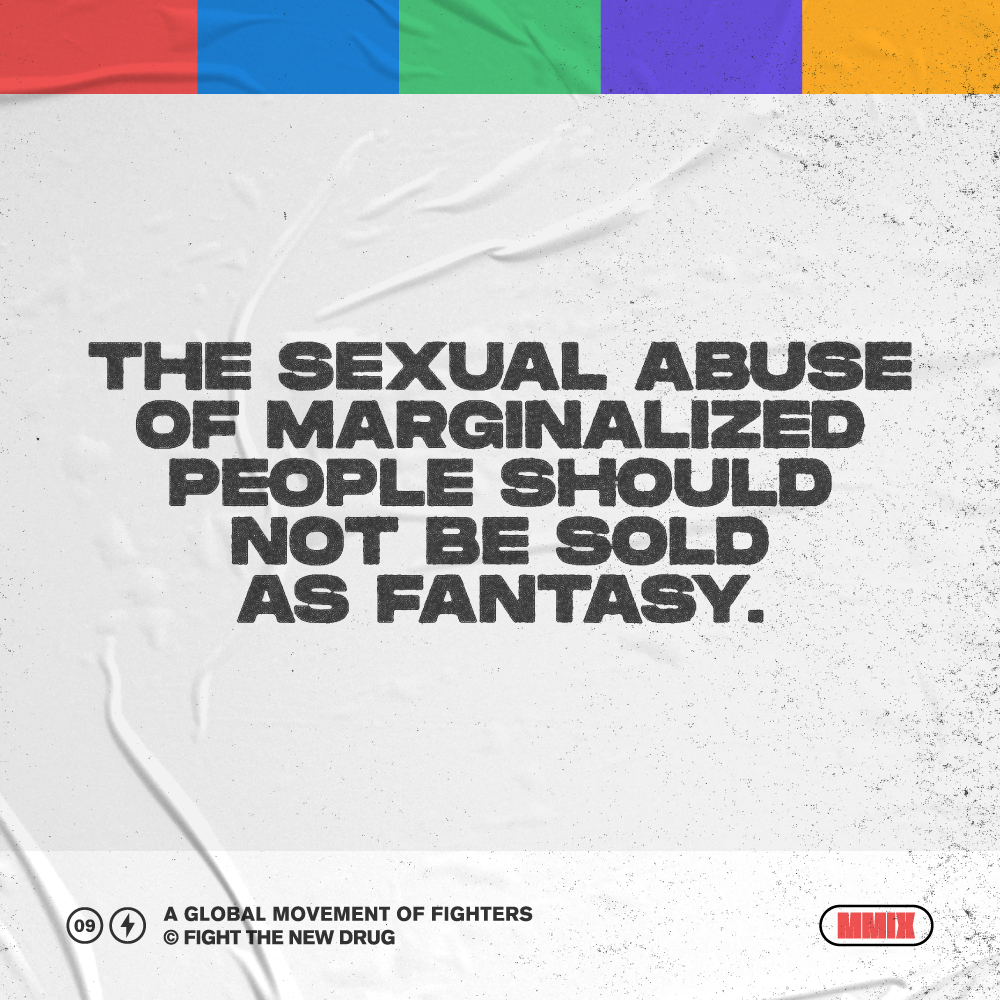It’s getting to be more and more common to hear about someone we know—or even a friend—who has been a victim of a type of image-based sexual abuse called “revenge porn.”
In fact, one U.S. study found that 1 in 25 Americans has had intimate images shared or has been threatened to have them shared. And an Australian study conducted in 2017 reported that 1 in 5 Australians were victims of image-based sexual abuse.
In case you need a refresher, image-based sexual abuse (IBSA) is when “intimate, nude or sexual images are distributed without the consent of those pictured. This includes real, altered (e.g. Photoshopped) and drawn pictures and videos.” It’s used interchangeably with revenge porn, because the term “revenge porn” can be misleading with regard to motive or content.
Revenge porn issues target some groups more than others
As an organization, our resources have demonstrated how porn doesn’t even try to be an ambassador for equality, and revenge porn is no exception. Recent studies have shown several eye-opening facts about how revenge porn issues disproportionately affect some people.
The first, and seemingly only way revenge porn levels the playing field is that men and women are equally likely to become victims. Other than that, the differences in the way it impacts victims are pretty big.
Related: Teen Sextortion: Huge Revenge Porn Sharing Network Targets Underage Dutch Girls
For example, even though women and men are affected equally, women are twice as likely to be threatened with intimate image sharing as men. These differences are especially magnified when it comes to minority groups, particularly LGBTQ+.
Consider this: that same Australian study from before found that those who identify as lesbian, gay, or bisexual are four times more likely to be victims of revenge porn (36% reported abuse) compared to heterosexuals (21% of whom reported abuse).
Another found that “17% of LGB Americans have either had an image shared without their consent or have had someone threaten to share an image of them.” Gay or bisexual men were also found to be the largest group that consensually took and sent sexual images, with 79% reporting having done so.
However, when we talk about revenge porn the key is the lack of consent.
Regarding nonconsensual distribution, 21% of LGB Australians reported at least one experience of the nonconsensual distribution of a nude or sexual image, compared with 9% of those identifying as heterosexual. What’s more, “nude or sexual images being taken without consent was the most common form of image-based abuse for LGB participants, with 33% reporting experiencing this abuse, as compared with 19% of heterosexual-identifying participants.”
The LGBTQ+ community is not the only one that has been targeted by revenge porn. Minority groups and young people, in general, are also disproportionately affected. Those from low-income households, people of color, people with disabilities, and other indigenous or minority groups are often the ones reporting abuse with higher frequency. Recent studies also confirm that younger people (ages 15-29) and in particular younger women are at higher risk of being targeted.
So what?
So revenge porn affects people differently. So what? We hear you. The first thing you need to understand is that revenge porn a big deal, in general. Apart from the majority of states and some countries that have made it illegal, and legislation is in process in the US to making nonconsensual image-sharing a federal crime, in general people agree it should be a crime to distribute nude images nonconsensually.
That’s not all. According to one study, “victims of revenge porn can experience significant damage to their mental health, including trust issues, PTSD, anxiety, depression, suicidal thoughts, and several other mental health effects.” A 2016 study conducted on the effect of revenge porn on mental health revealed that victims of revenge porn can experience symptoms similar to those of sexual assault.
Related: Sexting Linked To Increased Porn Consumption, Relationship Insecurity, And Cheating
For example, victims report feeling a loss of control, one of the “most violating” aspects of revenge porn, and one of the most distressing when analyzed in sexual assault cases. Around 80% of victims of sextortion report high levels of psychological distress.
It’s pretty clear why revenge porn is no joke. It’s serious enough that many governments are starting to act to eliminate it, and its effects on individuals’ mental health are intense enough to cause problems similar to those of survivors of physical assault.
In revenge porn, often times the detrimental effects are linked to consent issues, which when violated, has an impact that can’t be understated. As one victim of revenge porn expressed it:
“While everyone has a past, no one necessarily expects it to become public like that.”
Click here to learn what you can do if you are a victim of image-based abuse or revenge porn.

Your Support Matters Now More Than Ever
Most kids today are exposed to porn by the age of 12. By the time they’re teenagers, 75% of boys and 70% of girls have already viewed itRobb, M.B., & Mann, S. (2023). Teens and pornography. San Francisco, CA: Common Sense.Copy —often before they’ve had a single healthy conversation about it.
Even more concerning: over half of boys and nearly 40% of girls believe porn is a realistic depiction of sexMartellozzo, E., Monaghan, A., Adler, J. R., Davidson, J., Leyva, R., & Horvath, M. A. H. (2016). “I wasn’t sure it was normal to watch it”: A quantitative and qualitative examination of the impact of online pornography on the values, attitudes, beliefs and behaviours of children and young people. Middlesex University, NSPCC, & Office of the Children’s Commissioner.Copy . And among teens who have seen porn, more than 79% of teens use it to learn how to have sexRobb, M.B., & Mann, S. (2023). Teens and pornography. San Francisco, CA: Common Sense.Copy . That means millions of young people are getting sex ed from violent, degrading content, which becomes their baseline understanding of intimacy. Out of the most popular porn, 33%-88% of videos contain physical aggression and nonconsensual violence-related themesFritz, N., Malic, V., Paul, B., & Zhou, Y. (2020). A descriptive analysis of the types, targets, and relative frequency of aggression in mainstream pornography. Archives of Sexual Behavior, 49(8), 3041-3053. doi:10.1007/s10508-020-01773-0Copy Bridges et al., 2010, “Aggression and Sexual Behavior in Best-Selling Pornography Videos: A Content Analysis,” Violence Against Women.Copy .
From increasing rates of loneliness, depression, and self-doubt, to distorted views of sex, reduced relationship satisfaction, and riskier sexual behavior among teens, porn is impacting individuals, relationships, and society worldwideFight the New Drug. (2024, May). Get the Facts (Series of web articles). Fight the New Drug.Copy .
This is why Fight the New Drug exists—but we can’t do it without you.
Your donation directly fuels the creation of new educational resources, including our awareness-raising videos, podcasts, research-driven articles, engaging school presentations, and digital tools that reach youth where they are: online and in school. It equips individuals, parents, educators, and youth with trustworthy resources to start the conversation.
Will you join us? We’re grateful for whatever you can give—but a recurring donation makes the biggest difference. Every dollar directly supports our vital work, and every individual we reach decreases sexual exploitation. Let’s fight for real love:




